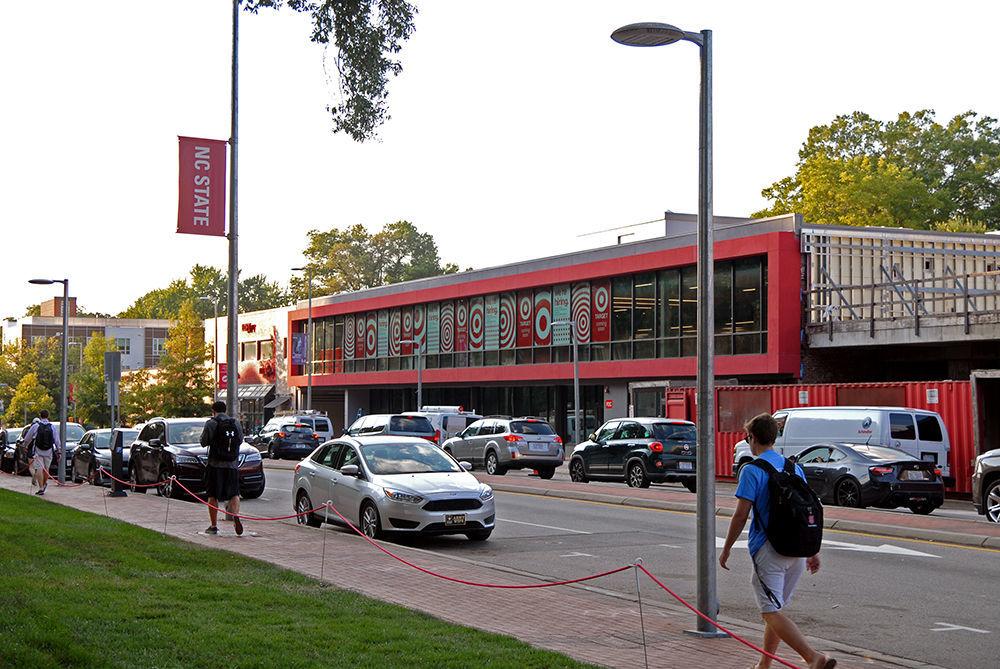A new parking study to assess access to parking on Hillsborough Street was released, revealing that the possible solutions to accommodate the high parking demands might take a few years to implement.
In August, Live It Up! Hillsborough Street released the Hillsborough Street Corridor parking study. The study’s goal was to identify not only the issues of parking along the corridor and in surrounding areas, but also to suggest different actionable solutions that could help to solve the problem.
The area is a corridor, and not one central area, which makes solutions like a single parking deck less effective as a solution to the parking problem. Three different timelines of solutions were given within the study, short term, medium term and long term.
“I think parking is an extremely complex issue that’s got lots of factors that play into why it’s challenging,” said Jeff Murison, executive director of Live It Up! Hillsborough Street. “We clearly have a supply problem; we clearly have an abundance of demand. There’s lots of people who want to come here, particularly students and people related to the university.”
NC State creates a lot of the demand for parking along the corridor, both from students and those wishing to visit the university. For a lot of students, the best option for parking on or near campus is to get a parking pass, but this is not an option for all students.
“If you don’t get the parking pass in time, then that forces a student that’s either commuting or just wants to drive to school, it forces them to park on Hillsborough or off of Hillsborough,” said Logan Toomey, a third-year studying economics.
Toomey, who commutes to campus daily, said there is always a risk of getting a ticket when parking in spaces on or in surrounding streets off Hillsborough.
“The one issue with that is, if you are parking off of Hillsborough there is still the off chance that you’re going to get a ticket for parking over two hours, due to the fact that it is a residential neighborhood,” Toomey said. “So, parking on Hillsborough just seems to be a lose-lose situation for the school and for the students who attend the school.”
According to Murison, the study revealed that some solutions to the problem will take several years to fully implement.
“The executive summary and the recommendations are an easy way to get the high-level elements of it,” Murison said. “The large takeaways are that to change parking environment is not a one decision, one policy implementation issue. It’s a multitude of some small, medium and large changes that will probably take quite a few years to develop and implement and have people’s habits change.”
The residential areas around Hillsborough Street are one of the areas targeted for a solution within the study. The study shows that these areas could be utilized as neighborhood parking benefit districts, which would help solve part of the issue of supply. It would also accommodate the people who live in the area who are not pleased with people parking along their streets.
“A suggestion would be for a neighborhoods parking benefits district,” Murison said. “Which essentially would identify that area and capture some portion of the parking revenue generated in it that would go back to help investment in that community whether it would be more trash cans or better signage or improved landscape so that there is some return benefit for the impact that the addition parking may have on that community.”
This solution is one that would fall under the long-term category and could take years to come into effect. However, there are some solutions which could alleviate some of the parking issues sooner.
One of these quicker solutions would be a coordinated effort to create a consistent signage system to help people identify and locate areas in which they can park in. Another possible solution that could come into effect sooner is the use of some underutilized lots, such as bank parking lots after the bank closes.
“There are banks that are open during the day, and the lot is being used for their customers, but at night the bank is closed, and the parking lot is closed and there is just an empty lot,” Murison said. “So, if we can figure out a better way to use some of the supply that is already here, that could help us provide more opportunity.”
To view the entire Hillsborough Street parking study, click here.








